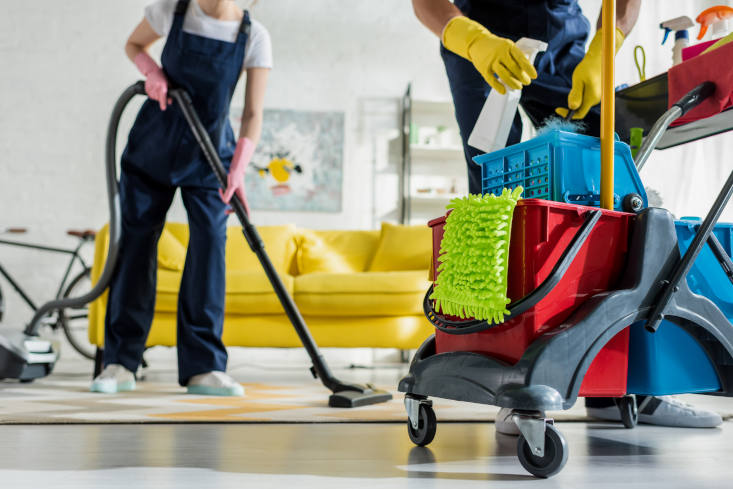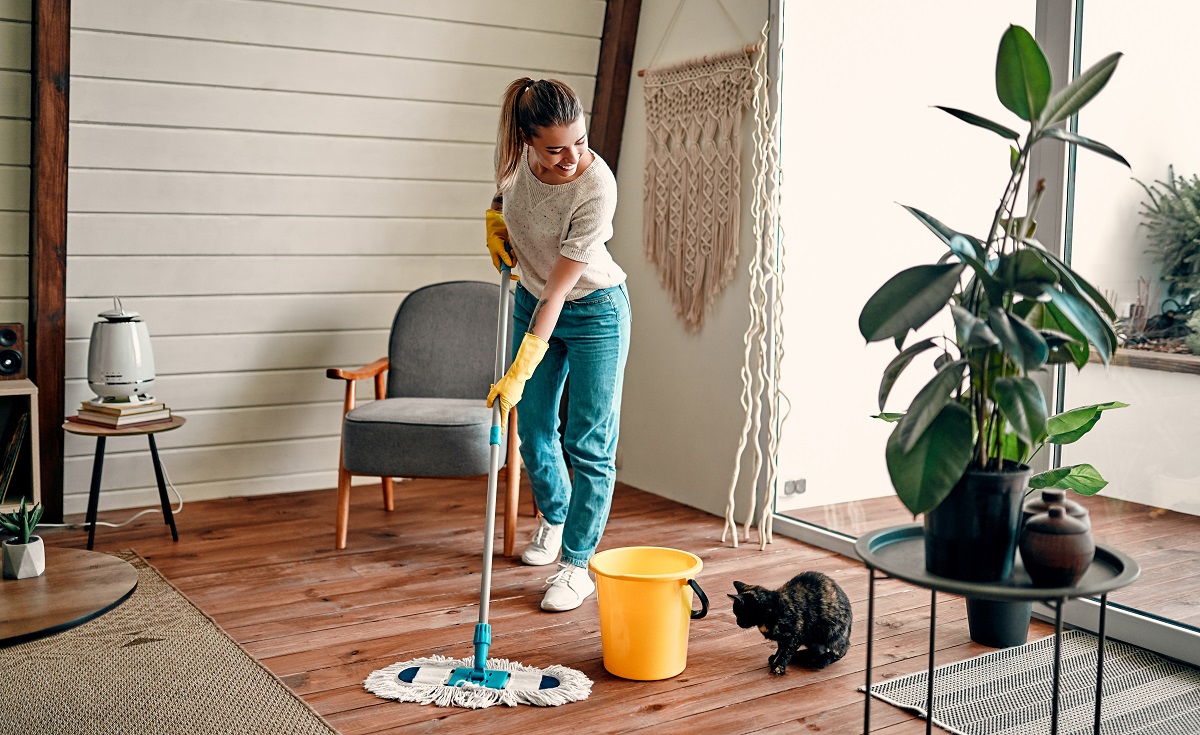Precisely How to Master Everyday Cleaning: Tips for Effective Defrosted and Cleaned Every Few Months and Decluttering
Precisely How to Master Everyday Cleaning: Tips for Effective Defrosted and Cleaned Every Few Months and Decluttering
Blog Article
Recognizing the Need for Completely Sanitizing and Sanitizing Often Touched Surfaces in High-Traffic Areas
In the world of public health and wellness and safety, the precise sanitation and sanitization of regularly touched surfaces in high-traffic areas stand as paramount procedures in protecting against the spread of hazardous virus. By exploring the various elements of surface area sanitation, from the risks associated with disregarding cleansing methods to the efficient methods that can be utilized, a more clear understanding emerges of the vital function these practices play in securing public health and wellness.
Significance of Surface Area Disinfection
Highlighting the complete sanitation of high-traffic surface areas is vital in keeping a hygienic environment and stopping the spread of hazardous pathogens. High-touch surfaces such as door manages, light buttons, elevator switches, and counter tops work as reproducing grounds for viruses and bacteria. Routine sanitation of these surfaces is essential to minimize the danger of contamination and transmission of diseases.
By executing a durable disinfection protocol, establishments and services can develop a safer setting for employees, site visitors, and clients. Proper surface area sanitation not just alleviates the spread of infectious conditions yet also infuses confidence in the tidiness and safety of the premises. This positive approach shows a commitment to wellness and health, which is specifically vital in high-traffic locations where the probability of direct exposure to microorganisms is enhanced.
Furthermore, surface area sanitation plays an essential duty in total infection control approaches. Combined with hand health practices, using masks, and maintaining physical distancing, complete sanitation of high-touch surface areas develops an extensive defense against the transmission of damaging microbes. Focusing on surface area disinfection is a necessary part of an alternative technique to health and wellness in shared spaces.
Dangers of Overlooking Cleansing Practices
Disregarding detailed disinfection of high-traffic surface areas dramatically heightens the danger of microbial and viral contamination, presenting a major danger to the health and wellness of individuals often visiting these areas. Failure to apply appropriate cleaning practices can bring about the build-up and spread of hazardous pathogens, consisting of microorganisms and viruses, on frequently touched surfaces such as doorknobs, handrails, lift buttons, and countertops.

Furthermore, neglecting the relevance of comprehensive cleaning not just compromises the well-being of individuals yet additionally undermines efforts to maintain a tidy and hygienic atmosphere. It is essential to recognize the value of correct disinfection procedures in preventing the spread of infections and protecting public health.
Efficient Disinfection Approaches
To preserve ideal cleanliness and decrease the danger of contamination on high-traffic surfaces, employing efficient sanitation techniques is crucial. Among one of the most usual and reliable disinfection approaches is utilizing chemical anti-bacterials. These items can vary in strength and make-up, with some targeting certain microorganisms like infections or bacteria. It is important to adhere to the producer's directions for appropriate dilution, get in touch with time, and air flow when using chemical anti-bacterials to guarantee their performance - Clear Out Any Clutter.
Another efficient method is the use of UV-C light. UV-C light has been revealed to be effective in killing a wide range of bacteria by interrupting their DNA framework, hence avoiding them from replicating. However, it is necessary to use UV-C light effectively, ensuring that the appropriate strength and direct exposure time are used to attain the wanted disinfection outcomes.
Additionally, employing steam cleaning as a sanitation approach can be highly effective, particularly on surfaces that are heat-resistant. Steam can pass through permeable surfaces and eliminate microorganisms, infections, and various other pathogens successfully. When making use of steam cleaning, it is vital to guarantee that the surface area gets to the required temperature for an enough amount of time to assure proper sanitation.
Impact on Public Health
The maintenance of high criteria of cleanliness and disinfection on high-traffic surface areas plays a critical duty in protecting public health and wellness. Frequently touched surfaces in areas with high footfall, such as doorknobs, handrails, lift switches, and restroom facilities, act as reproducing premises for dangerous virus. Stopping working to properly disinfect these surface areas can result in the quick spread of infectious conditions within neighborhoods. By implementing thorough sanitation protocols, the danger of transmission of infections, germs, and various other germs can be considerably reduced.
In high-traffic areas like flight terminals, colleges, hospitals, and public transport systems, the impact of strenuous sanitation measures can not be understated. Prioritizing the sanitization of often touched surface areas is a proactive approach to advertising public wellness and enhancing the security of people in common rooms.
Carrying Out Routine Cleaning Procedures
Immediately setting up and sticking to a constant timetable of cleansing methods is paramount for preserving the cleanliness and security of high-traffic surface areas. Routine cleaning protocols are important in stopping the buildup of bacteria and pathogens on frequently touched surface areas, specifically in locations with high foot web traffic. By applying a methodical method to cleansing, organizations can efficiently lower the danger of illness transmission and produce a much healthier setting for workers, clients, and the general public.
To develop an effective cleaning schedule, it is vital to identify high-traffic locations that call for frequent attention. Website These areas might include doorknobs, handrails, lift switches, bathroom facilities, and shared tools. Applying a routine cleansing regimen that targets these surfaces several times a day can considerably reduce the spread of dangerous bacteria and viruses.
Additionally, utilizing appropriate cleaner and disinfectants is crucial to ensuring that surfaces are web completely sanitized. Routine training of cleansing personnel on appropriate cleansing techniques and the value of adherence to the cleansing schedule is also important in preserving a hygienic atmosphere. By prioritizing constant cleaning protocols, organizations can advertise the health and wellness and wellness of individuals who communicate with these high-traffic surfaces.

Conclusion
In verdict, it is critical to prioritize extensive disinfection and sanitization of frequently touched surface areas in high-traffic locations to prevent the spread of unsafe microorganisms and maintain public health and wellness. Ignoring proper cleaning techniques can enhance the threat of contamination and transmission of diseases. By implementing regular cleansing methods and using reliable disinfection methods, we can create a more secure setting for every person (Everyday cleaning). It is crucial to identify the relevance of preserving clean surfaces in high-traffic areas to make certain the health of the neighborhood.
In the world of public health and security, the meticulous sanitation and sanitization of frequently touched surfaces in high-traffic locations stand as extremely important measures in protecting against the spread of harmful microorganisms. By checking out the various facets of surface sanitation, from the dangers associated with overlooking cleaning protocols to the reliable approaches that can be used, a more clear understanding emerges of the essential role these practices play in guarding public wellness.Furthermore, using steam cleansing as a disinfection approach can be very efficient, particularly on surfaces that are heat-resistant. When utilizing heavy steam cleansing, it is vital to ensure that the surface area gets to the required temperature level more tips here for an adequate amount of time to guarantee appropriate disinfection.
In verdict, it is important to prioritize extensive disinfection and sanitization of frequently touched surfaces in high-traffic areas to protect against the spread of harmful virus and maintain public health and wellness.
Report this page